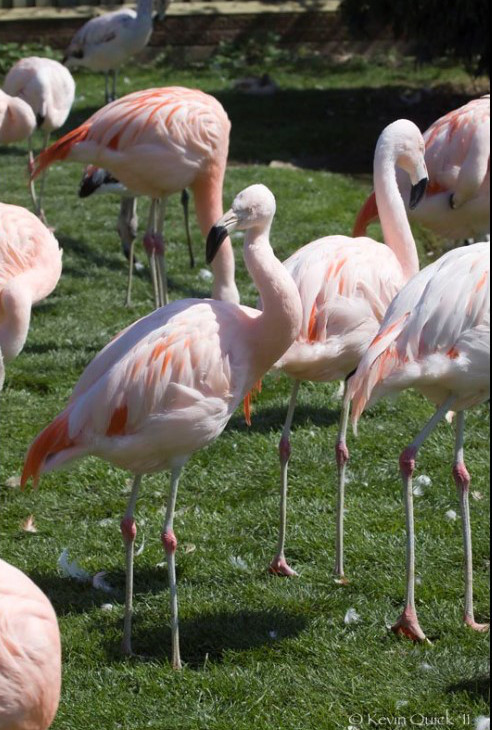Some interesting facts about Phoenicopterus chilensis are...
· Chilean
flamingos stay in large groups, sometimes close to 70,000 birds
(Bucher et al. 2012)!
· Chilean
Flamingos stand on one leg because it is more comfortable, and
because they tuck their leg
up underneath their feathers
to keep their body warm (Lincoln Park Zoo 2001).
· The name
flamingo originates from the mid-16th century. It comes from an
earlier version of the
Spanish flamenco, the flamengo. Also, due
to the flamingo’s color, they are associated with flamma
which
is “a flame” (Oxford Dictionary 2014).
· With their
long, lanky necks, they don’t have extra vertebrae; they have 19
cervical vertebrae that
are elongated (Animal Diversity Web
2007).
· Phoenicopterus
chilensis eat with their heads upside down so their bills can
filter out the food for the
flamingo, and drain the water
(Wicker 2004).
· When flamingos
look like their knees are bending backwards, it’s actually their
ankles. Their knees
are located farther up on their body, right
underneath their feathers (Wicker 2004).
· They have
webbed feet not just so they can swim, but also so they can stay
on top of the mud
when they walk (Wicker 2004).
· The more
carotenoids flamingos eat from zooplankton and other organisms,
the pinker their feathers
get (Animal Corner 2014).
· Some Andean
miners use the tongues of Chilean Flamingos because they believe
it is the cure to
tuberculosis (Field Guide).
· They eat
blue-green alga which not only provides food for the animal, but
also keeps the waters
clean (Grinfeld 2007).
· Chilean Flamingos have bred before to Barry White.
Seductive songs not only encourage
reproduction for humans, but
for flamingos (news.com.au 2012).
· Flamingos can
hold their breaths for a very long period of time (University of
Exeter).
· The inside of
a flamingo’s egg is pink (University of Exeter)!
· Chilean
flamingos can absorb water through their feathers when they
bathe in freshwater springs
and small puddles (Archive 2013).
